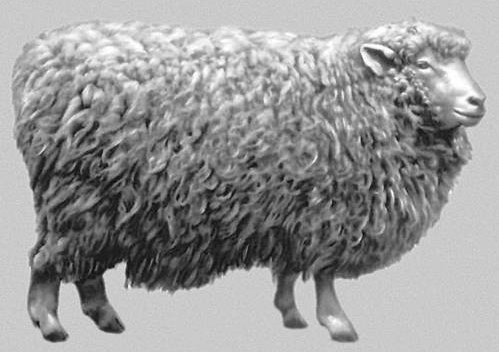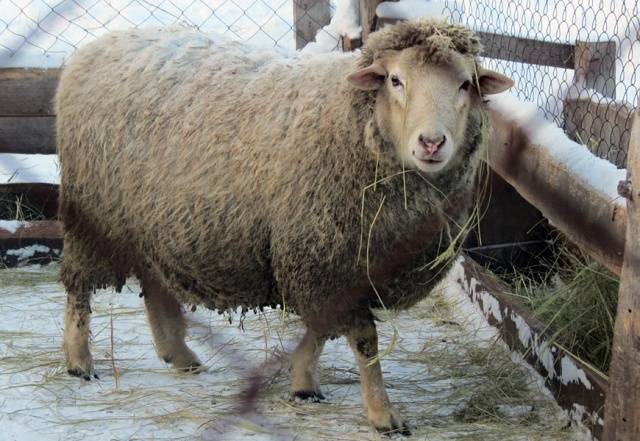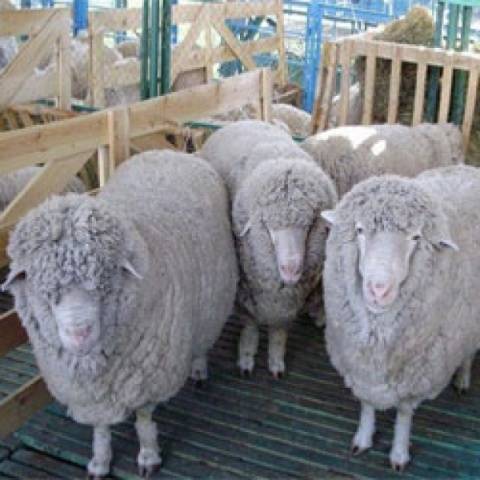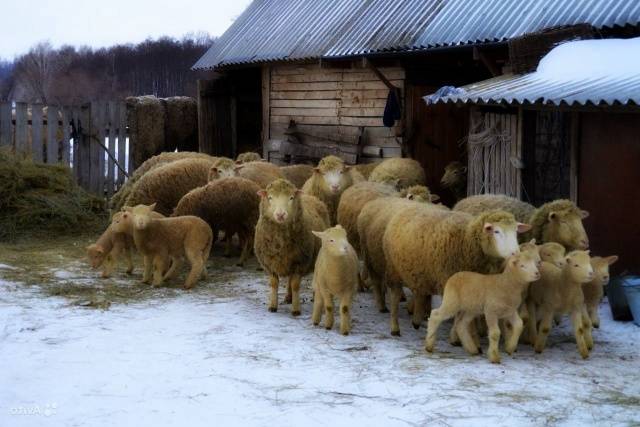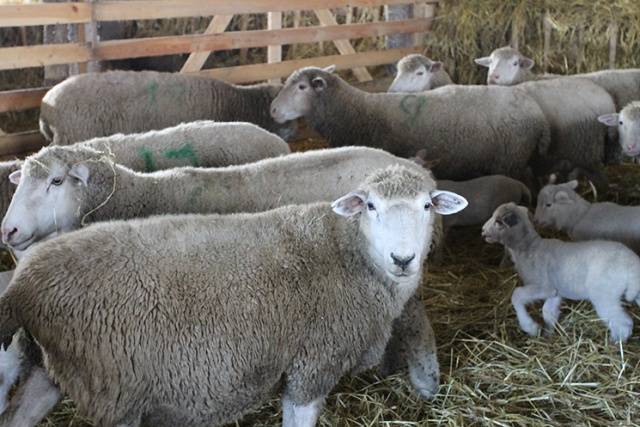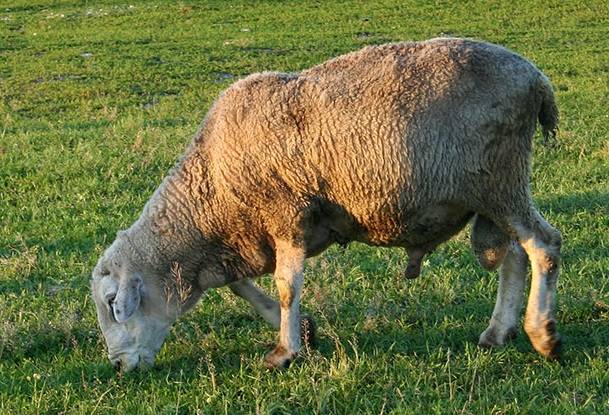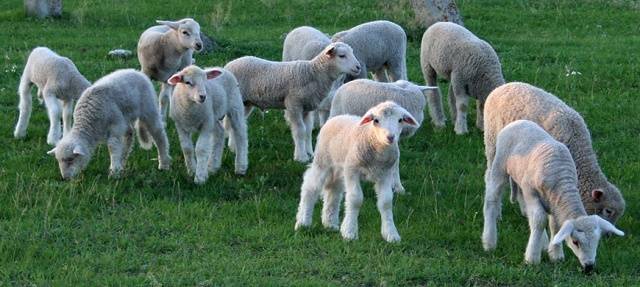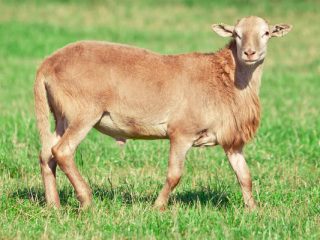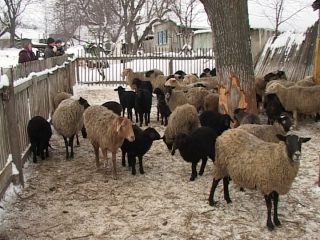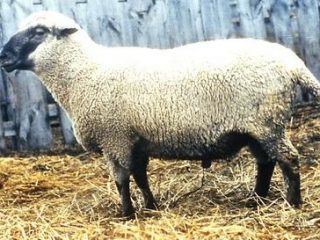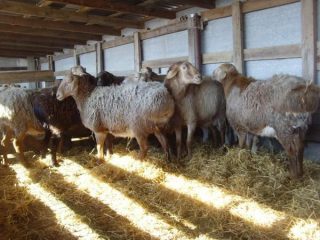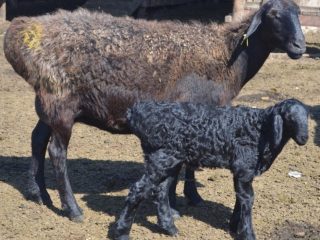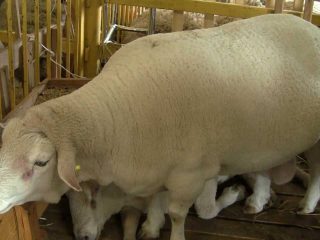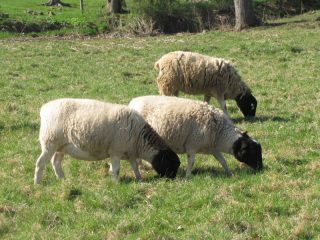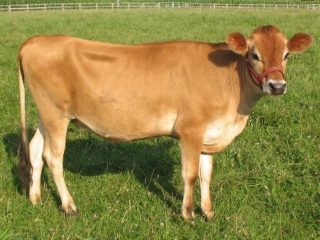Today in Russia there are relatively few sheep breeds left that belong to the meat category. There are virtually no meat-only breeds at all. As a rule, breeds capable of producing a good slaughter yield of meat belong to either the meat-grease or meat-wool categories. The latter also includes the semi-fine-fleece breed of Kuibyshev sheep.
The breeding of the Kuibyshev breed began in the second half of the 30s of the 20th century. This breed was bred in the Kuibyshev region by crossing Romney Marsh rams and Cherkassy ewes with further breeding of the crosses. Work on the breed lasted from 1936 to 1948. The result was a sheep capable of producing relatively high quality wool and a fairly high percentage of meat from the carcass.
Breed standard
Kuibyshev sheep are large animals with massive bones. The constitution is strong. Legs of medium length, strong, with correct posture.
The head is wide, characterized by overgrown fleeces up to the eye line. There are no horns.
The body is long and barrel-shaped. The back, loin and sacrum are wide. The top line of the body is smooth. In general, the shape of the body corresponds to the characteristics of the meat breed. The chest is deep and wide. The tail is docked.
The average weight of rams is 102 kg, ewes 72 kg.Slaughter yield of meat is from 52 to 55%. 8-9 month old young animals produce up to 39 kg of meat.
The breed has good coat characteristics. The harvest from a ram is 5.5 kg, from a ewe - 4.1 kg. Clean wool yield 55±1%. The wool is of good quality, it is uniform, the fineness is 46-56 qualities and is right in the middle of the line that determines the quality of fineness.
It is often said about Kuibyshev sheep that they look like a ball of wool. The description of the breed according to the standard corresponds to this figurative comparison. The Kuibyshev breed of sheep is distinguished by significant hair growth on its legs, although it is inferior in this regard to the merino breeds of rams. According to the standard, the hair should reach the carpal joint on the front legs and the hock on the hind legs.
A year after the last haircut, the coat of this breed should be at least 11 cm long. The optimal length is 15 cm. In one-year-old Kuibyshev young animals, the coat length reaches 12 cm.
The disadvantage of almost all sheep is that their wool is constantly dirty due to the fact that dirt and manure stick to it when the flock is kept in a fairly cramped room, and the grease released by the skin is also retained. If you wash a Kuibyshev sheep, you will find that in addition to the standard characteristics of its wool, a pleasant color with a bluish tint will be added.
Sheep of the Kuibyshev breed at the All-Russian Sheep Exhibition in Elista:
Content
The Kuibyshev breed of sheep is adapted to life in the sharply continental climate of the Volga steppe region. It tolerates winters well and does not need a warm room for wintering.The main requirement: dry bedding and no gaps in the shed. This breed tolerates summer heat no less well, which is especially important due to the fact that these sheep belong to the semi-fine-fleece group.
Sheep have strong hooves that require either natural wear during prolonged grazing on hard rocky ground, or regular trimming of overgrown hoof horns. Hoofs are trimmed every 6 to 8 weeks. Otherwise, the hooves grow, turning into “skis”, and prevent the sheep from walking. The result is usually lameness.
Diet and feeding
In the first place, like any herbivores, in the diet of sheep is hay or fresh grass. It is better to feed lactating ewes ad libitum without limiting their need for hay. During lactation, the uterus’s body depletes its resources, and the animal loses a lot of weight, even when receiving the maximum possible amount of food. For this reason, even those ewes that can give birth to lambs at any time of the year are not recommended to do so more than once a year. The body must have time to recover, and the uterus must fatten. Single animals, young animals and breeding rams are given hay at the rate of 2-4 kg per day.
In addition to hay, sheep are provided with succulent feed: fodder beets, pumpkin, zucchini, carrots. Juicy feed improves the digestibility of roughage, which, along with straw and chaff, also includes hay.
If you give animals straw instead of hay, you must try to provide them with succulent feed and concentrates, since straw contains practically no nutrients. The best types of straw are: legume, oat, barley and millet straw.
The sheep's diet also includes mineral supplements: salt, feed chalk, bone and meat-and-bone meal, and vitamins. These components are especially important if animals receive straw instead of hay.
In summer, they try to graze the flock on grass. At this time, you can reduce vitamin supplements, leaving salt and minerals in the diet.
Breeding
Kuibyshev sheep are not highly fertile. The number of lambs per hundred ewes is 130 - 145 heads. Due to the low fertility of ewes, lambs of this breed gain weight well and grow stronger than their counterparts of other breeds, which produce 2-3 lambs per lambing.
Most sheep breeds are seasonal in breeding, producing lambs in the spring. Ewes are often bred in August–September, with the expectation that the lambs will be born in the spring when the grass is green. In more northern regions, it is better to harvest sheep later, since grass appears there later. In particular, Peter the Great’s manifesto contained a requirement to introduce sheep into the flock only from October 26th. Therefore, sheep owners will have to independently regulate the mating time. In the southern regions, ewes should be bred earlier so that the lambs have time to eat the grass before it burns out. In the north, later, so that the lambs do not have to spend a long time in a dark and cramped barn instead of pasture.
The sheep hunt lasts 38 hours. That is why during the mating period the ram must constantly be in the flock. He definitely doesn't miss a beat. For one ram, 60 ewes can be identified. If insemination does not occur, the sheep comes into heat again after 17±1 days.
It is important not to overfeed ewes, as this will reduce their fertility. Obese rams also do not have high quality semen. It is also impossible to starve animals; ewes in poor condition often remain barren.
Conclusion
The Kuibyshev sheep is advantageous in that you can get from it not only traditional wool, and quite high quality, but also a significant amount of tasty meat. In addition, this breed produces strong, disease-resistant offspring. When selecting a sheep breed suitable for both producing high-quality wool and meat, owners of private farmsteads should pay attention to the time-tested Kuibyshev breed.
